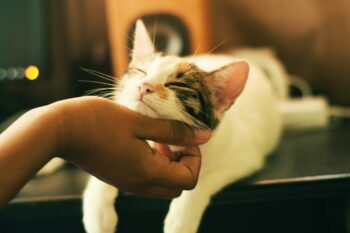First and foremost, we always recommend that you regularly have your cat examined by your veterinarian. These regular check-ups ensure there are no hidden health problems that could possibly be aggravated by the activity of training.
Cats, like people, are individuals. Each cat will react differently when the training begins. Your cat may ignore you when you begin to train him, or he may be very curious and eager.
Whatever your cat’s personality, here are some pointers that will make the process easier and more enjoyable for both of you:
Train your cat before he has his regular meal; a food reward won’t be very enticing to your cat if he has just finished dinner. Do not withhold food from your cat to make him eager to learn. An overly hungry cat will be an annoyed cat. And cats, like people on a diet, often lose their appetite when their food is cut back.
Use your cat’s favorite food as a reward. This could be a little bit of his regular cat food, or a special flavor or treat. (Always count in the training treats when you’r emeasuring how much to feed your cat in a day.)
In the beginning, train your cat in a quiet environment, free from distractions. Training your cat in the living room with the radio or the television set on will make the process difficult, if not impossible.
Keep the training sessions short. End them before your cat gets bored or tired, and he will be more eager for the next session. We recommend 10- or 15-minute training sessions.
Keep the training sessions the same–same trainer, same behaviors, same commands and signals, and same reward.
Keep your behavior focused and consistent. Your cat will be confused if your behavior or commands change during training.
Stay with it. Training your cat once a month won’t provide results. Once you begin, try to spend 10 or 15 minutes every day training your cat.







